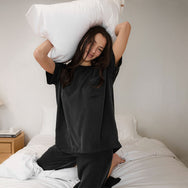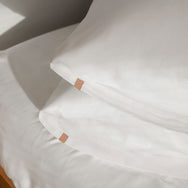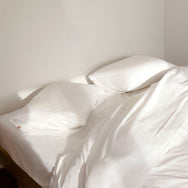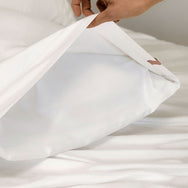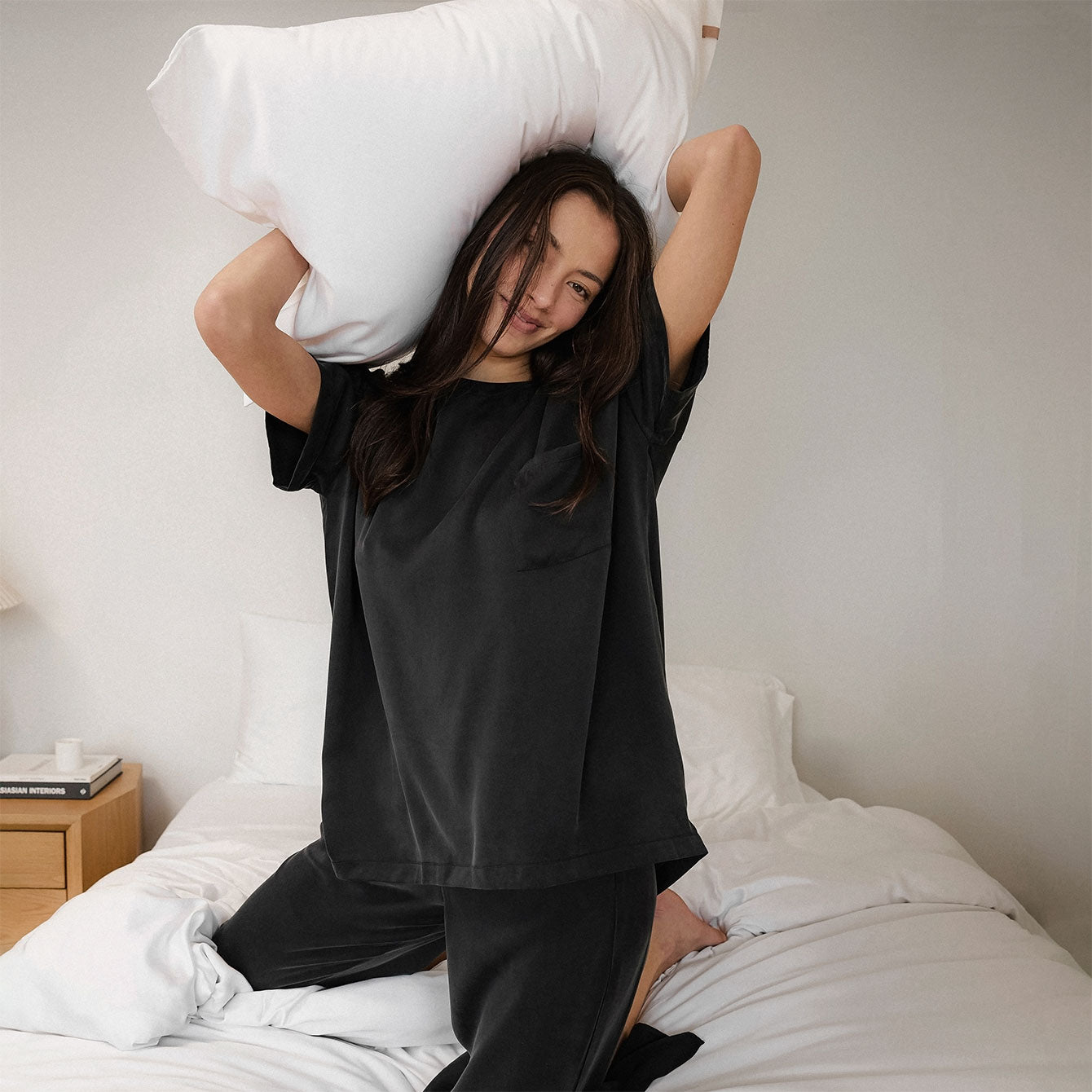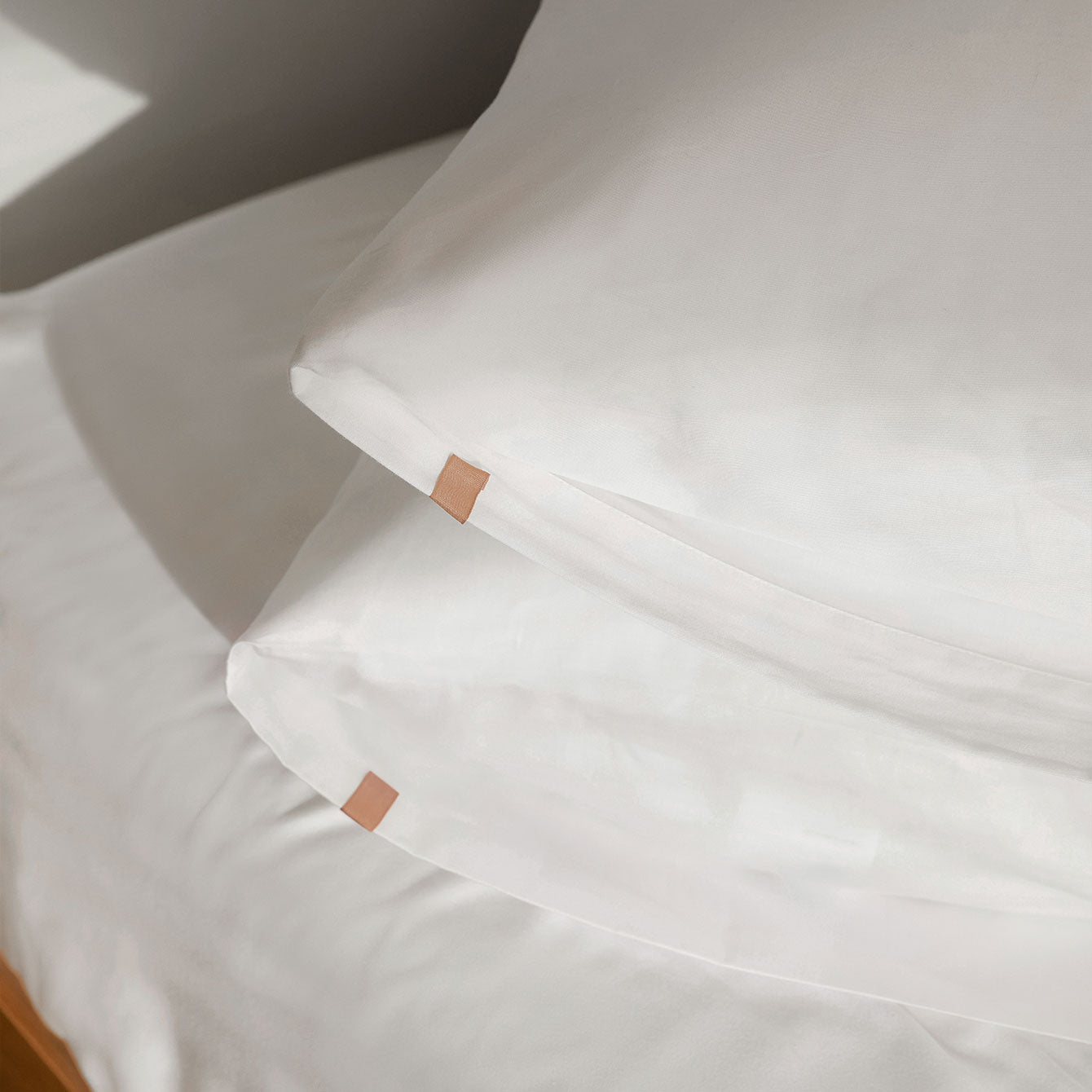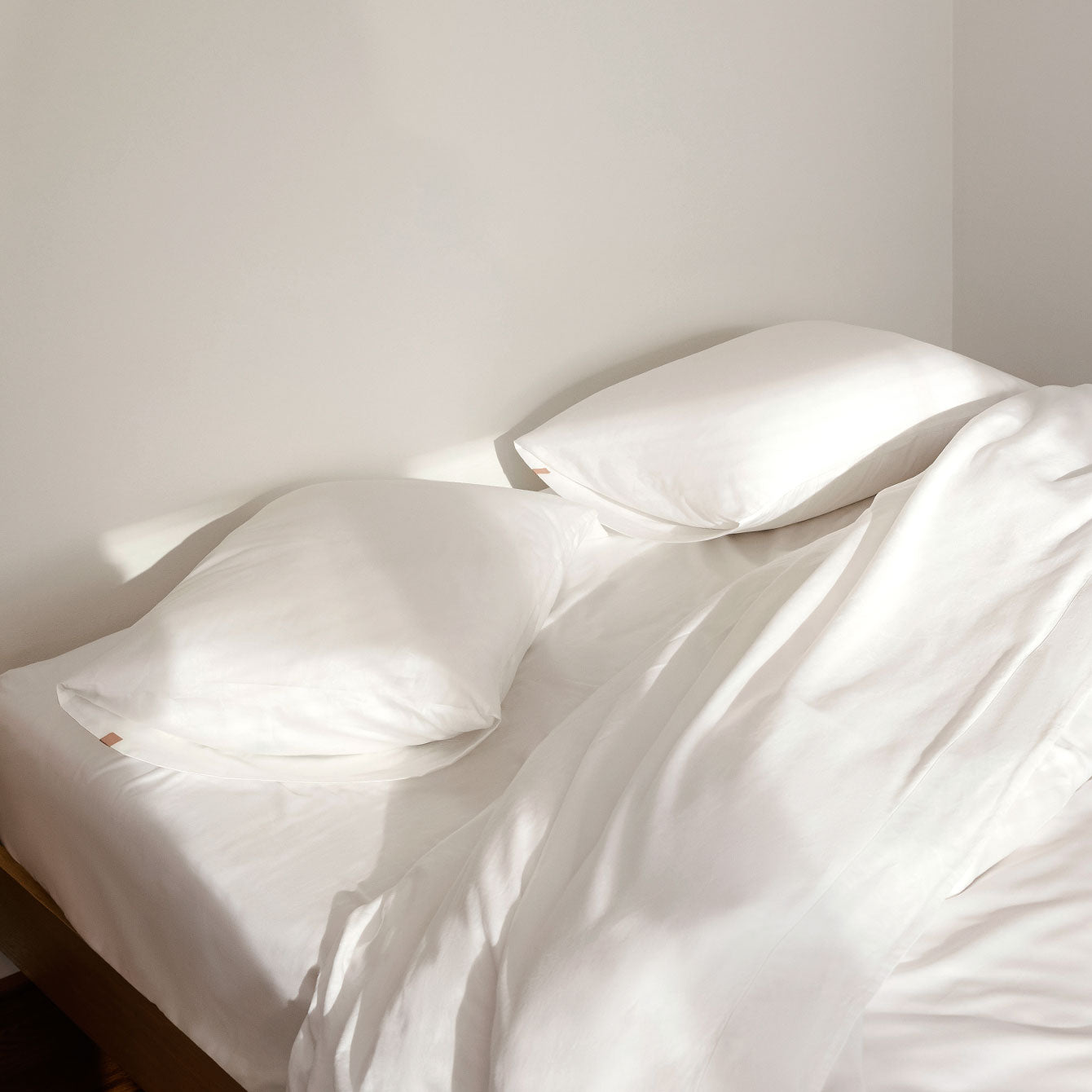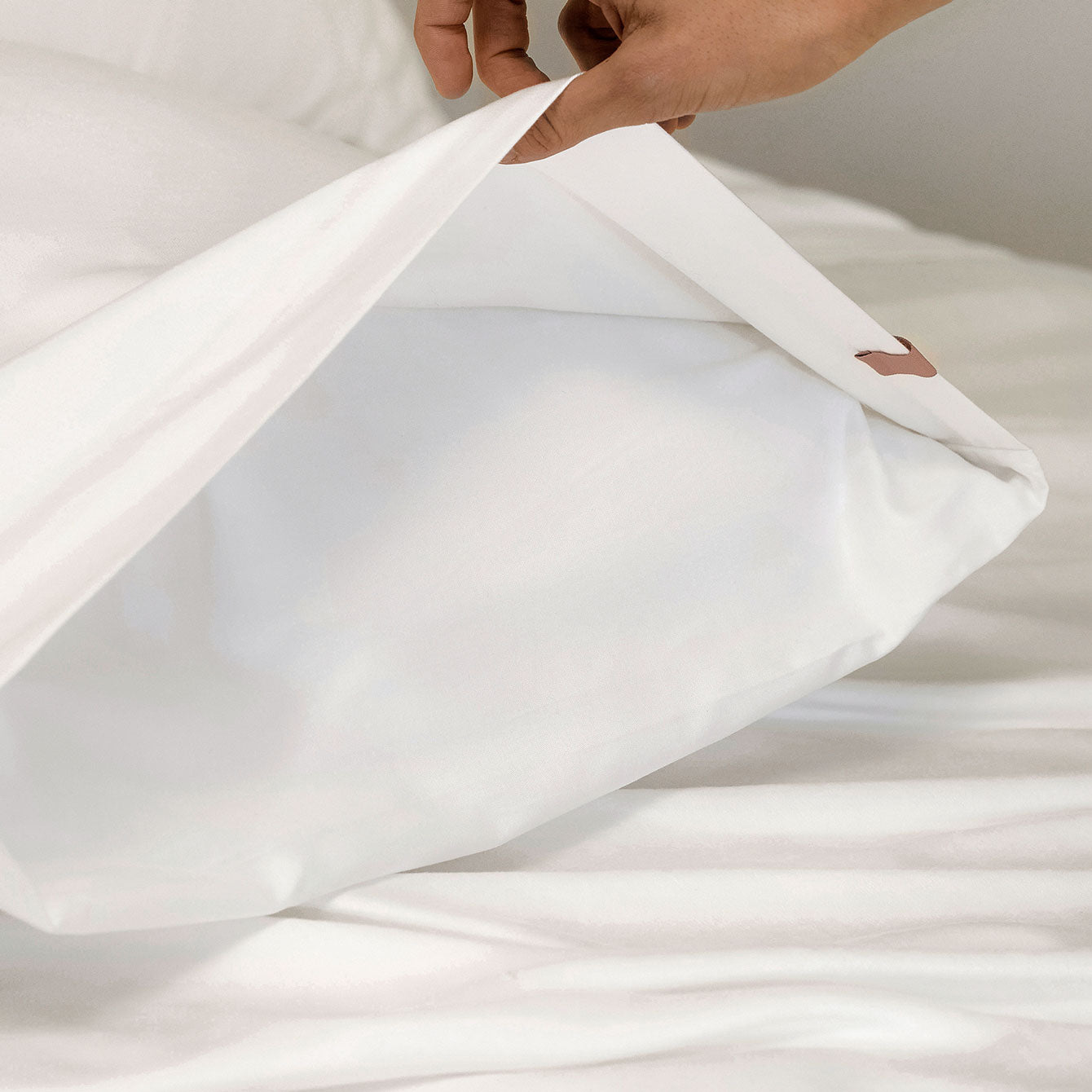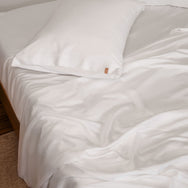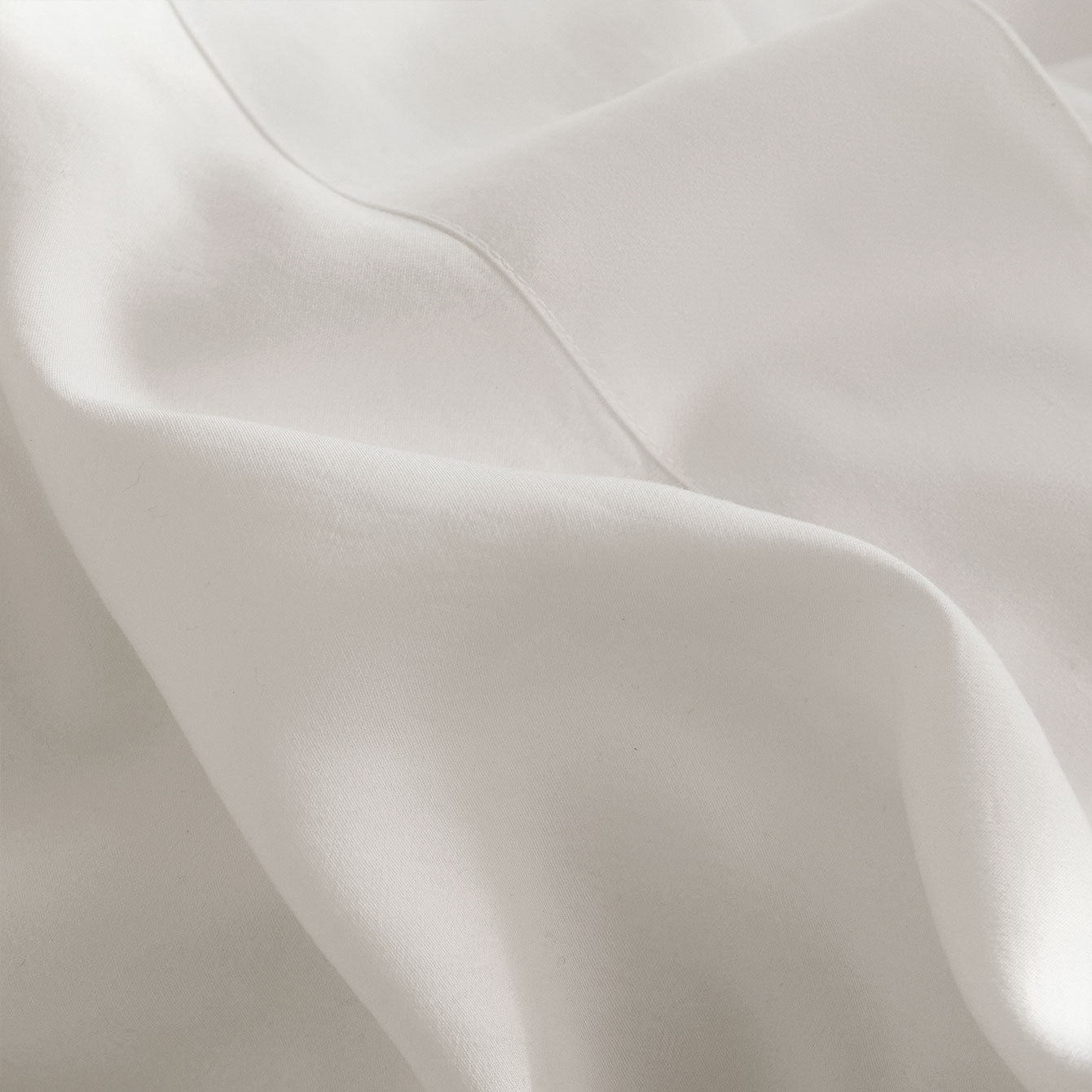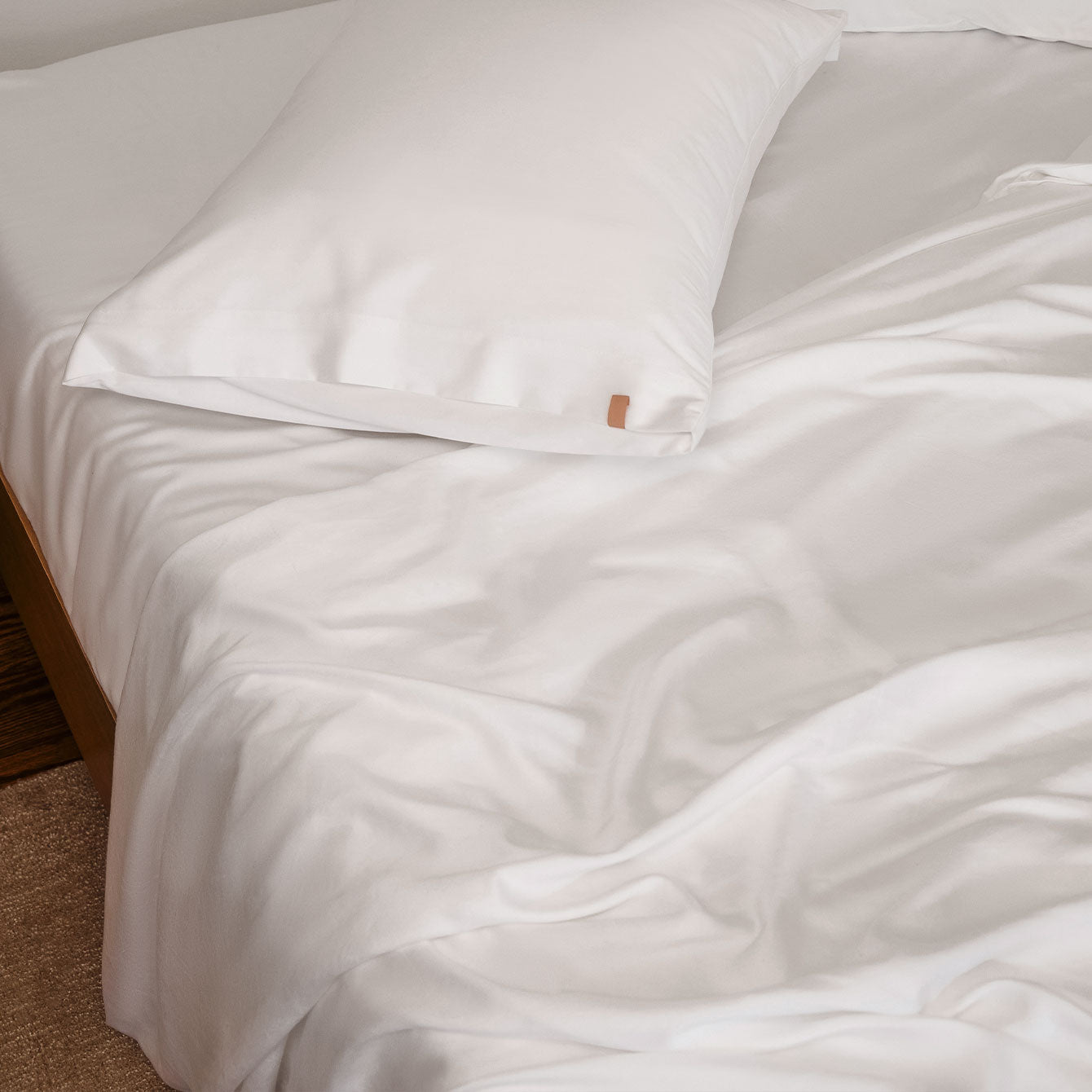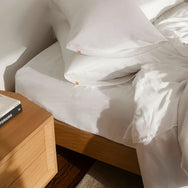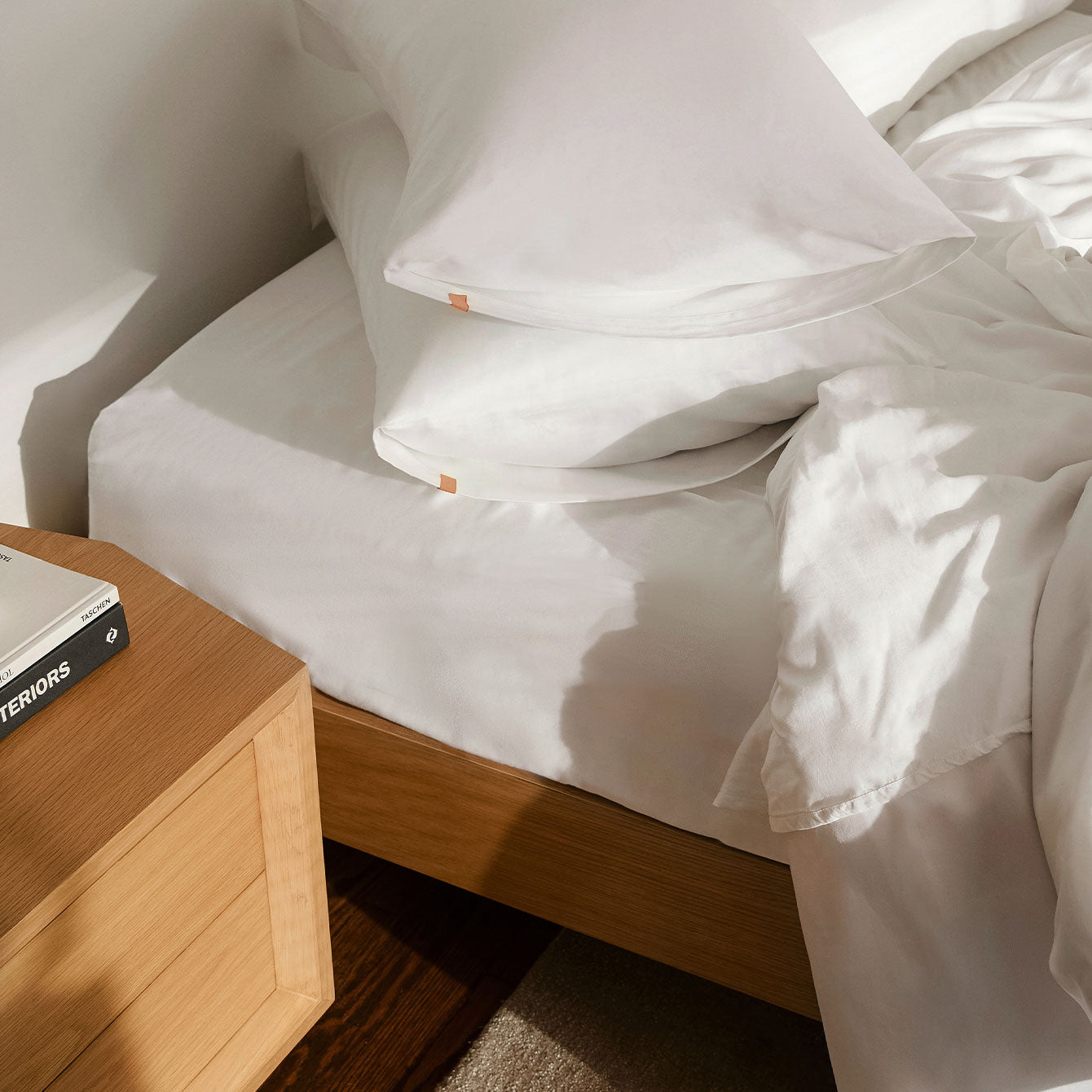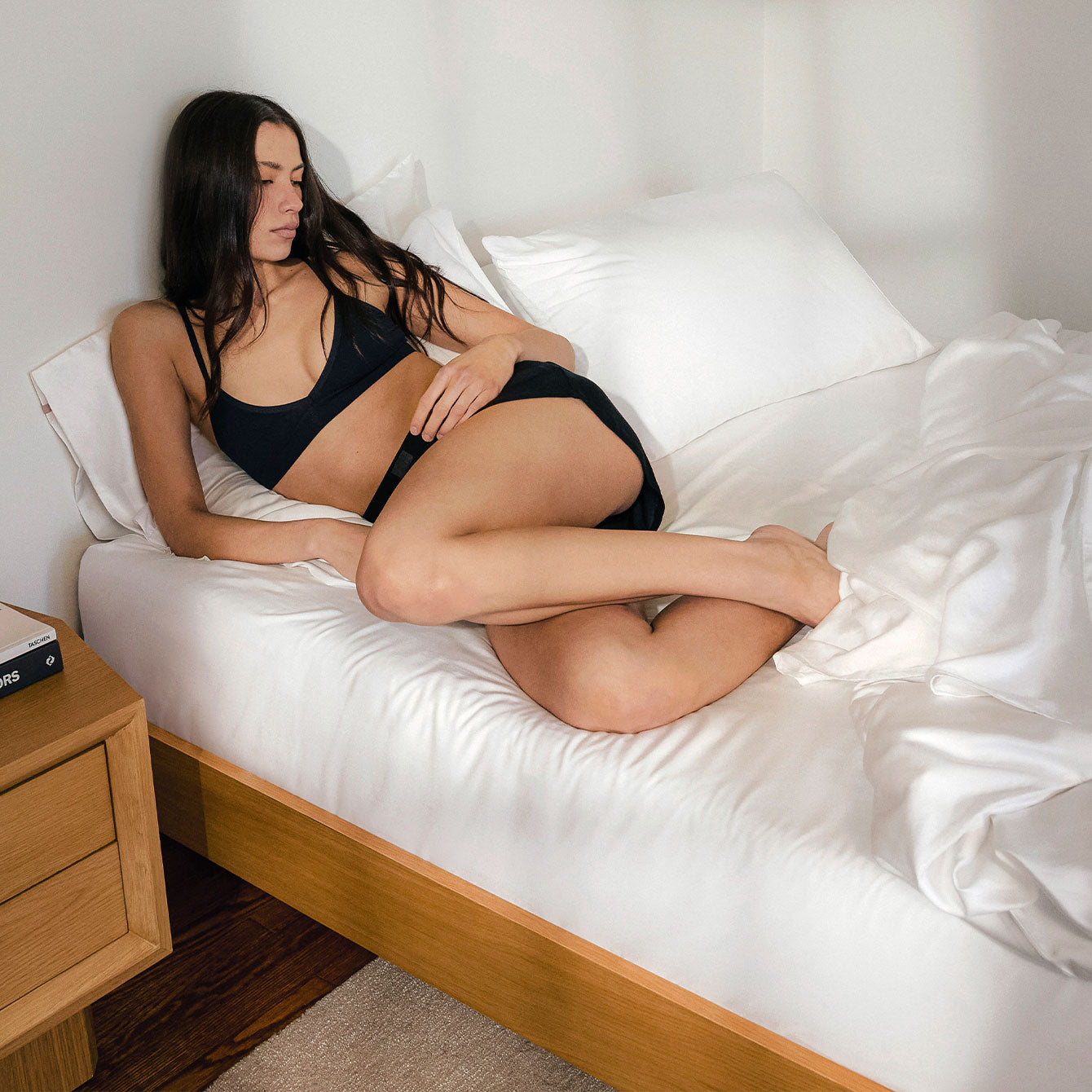
How to Fall Asleep Fast
Fall Asleep Fast with New Sheets
Name a better feeling than slipping into your bed made with freshly made, impossibly soft sheets. Cool, crisp, and cocoon-esque enough to make your body say finally.
Good sheets won’t solve tomorrow’s impending presentation, or that text you’re overthinking, but they can help you fall asleep faster. The right texture, the right temperature, the right everything. It all adds up.
Here’s how to make the most of that new sheet magic (and a few other smart tricks) to actually help you fall asleep fast.

The Quintessential Bedding Set
Understanding Sleep Challenges
Before we get to solutions, let’s do a little self-inventory. Knowing why you’re struggling to fall asleep helps you address the root of the issue. Whether it's biological, behavioral, or because your neighbors decided to host another midnight drum circle.
Identifying Insomnia
Insomnia isn’t just the occasional “oops I watched four episodes” night. It’s that endless tossing and turning when attempting to doze (or staying asleep) at least three times per week over the course of several months. If that sounds like your current situationship with sleep, it might be time to dig deeper or seek the help of a sleep specialist.
Recognizing Circadian Rhythm Disorders
Your circadian rhythm is basically your body’s built-in timekeeper, until life throws it completely off track. Jet lag. Night shifts. Binge-watching. All of these things can mess with your internal clock. If you're wired at midnight and dragging by noon, your rhythm might be out of sync and due for a gentle reboot.
Assessing Sleep Hygiene Habits
Spoiler: sleep hygiene has nothing to do with how often you wash your pillowcase (but still, please do that too). It’s about the habits and environment that affect your sleep quality. From that second iced matcha at 4 p.m. to bingeing true crime before bed, some of your favorite rituals might be sabotaging your shut-eye.

Effective Sleep Techniques
Call it modern ritual or just smart science, these techniques won’t hypnotize you on the spot, but they will teach your body how to wind down with a little more grace. Think of them as well-timed exits from the chaos of your day. Subtle cues that tell your brain it’s finally time to log off.
The 4-7-8 Breathing Method
Here’s a nervous system hack. Inhale for 4 seconds, hold for 7, exhale for 8. Then do it again. And again. This simple rhythm helps slow your heart rate, quiet racing thoughts, and ease your body into rest mode. Forget the sheep. It turns out, breathing on purpose is one of the most effective ways to fall asleep faster.
Progressive Muscle Relaxation
Think of it as a body scan meets a tension detox. Starting at your toes, gently tense each muscle group for a few seconds, then let go. By deliberately tensing and relaxing each muscle group—from toes to jaw—you’re teaching your body to distinguish between stress and calm. It’s a subtle but powerful way to downshift your physical state and signal to your brain that it’s safe to power down.
Meditation and Mindfulness
Mindfulness is about focused awareness, gently redirecting attention from racing thoughts to the present. Even five minutes a day can help lower cortisol levels and ease the mind into rest. Begin by closing your eyes, breathing deeply, and noticing whatever’s happening. Your breath, the weight of the blanket, the ambient hum of your space. No judgment, just observation. Consider it a mental declutter before lights out.
Visualization Exercises
The brain doesn’t always distinguish between imagination and reality, which makes visualization a clever neurological loophole. Instead of mentally replaying tomorrow’s meetings, try conjuring a calming scene: the weight of your duvet, the hush of waves, your body floating effortlessly. By engaging the senses, this technique gently nudges the mind out of problem-solving mode and into rest. In a way, it’s guided daydreaming with purpose.

Behavioral Strategies for Better Sleep
From consistent bedtimes to dialing down evening overstimulation, these habits train your circadian rhythm to work with you, not against you. It’s the pragmatic side of rest, the kind that pays off night after night.
Establishing a Consistent Sleep Schedule
The human body runs on rhythm. Disrupt it, and sleep will suffer. Sticking to a consistent sleep and wake time (yes, even on weekends) reinforces your internal clock and makes falling asleep feel less like a struggle and more like second nature. Imagine it as circadian choreography. The more predictable the routine, the smoother the performance.
Limiting Naps and Caffeine Intake
Naps. The double-edged sword. Brief, refreshing bursts, or a sleep disruptor in disguise. If you must indulge, keep your siestas under 30 minutes and before 3 p.m. As for caffeine, we’re all for it, but it’s a tricky one. That afternoon espresso might linger longer than you think, creeping into your system just when you’re trying to power down. Treat caffeine with caution and your sleep cycle will return the favor.
Creating a Calming Bedtime Routine
Imagine your nervous system like a dimmer rather than a light switch. A calming wind-down routine, whether it’s skincare, journaling, chamomile tea, or some in-bed stretching, lets your body know it’s time to rest. Let this be your sign to skip going through your inbox or falling down the rabbit hole of celebrity tea. This is a moment to signal relaxation, not ramping up.
Lifestyle Adjustments
Achieving better sleep isn’t just about what you do once the lights go down. It’s the subtle art of managing your waking hours. Unfortunately, being human means needing more than just good sheets and a dreamlike mattress. Let’s dive into the essentials to take your sleep to the next level of REM:
Incorporating Regular Exercise
Exercise isn’t just about physical health. It’s a useful tool for stress reduction, hormone balance, and signaling to your body that rest is deserved. But like everything, timing is everything. A late-night HIIT session might leave you too revved up to sleep, mentally counting those burpees in your head. Aim to finish your workout a few hours before bed for the best results.
Increasing Exposure to Natural Sunlight
Morning light helps set your circadian rhythm straight. Think of it as nature’s coffee (and a nice excuse for a little walk before noon). Open your curtains, take your Zoom call outside, or just stare out the window like a house cat.
Optimizing the Sleep Environment
A bedroom should be more than just four walls and a bed. It should be a well-balanced sanctuary. Consider temperature control, blackout curtains, and the elimination of blue light. And let’s not forget the tactile experience, like quality sheets with a high thread count and breathable properties. Hello, Quintessential Bedding, the only bedding you’ll ever need. At the end of the day, a carefully crafted environment is the foundation for fully restorative slumber.
Considering Sleep Supplements Responsibly
Melatonin is the go-to. But less is more. Start small, and avoid using it like a crutch. Other supplements like magnesium glycinate or valerian root can be helpful too, but talk to your doctor before turning your nightstand into a wellness aisle.

The Quintessential Bedding Set
Conclusion
Falling asleep quickly isn’t about chasing some magical quick-fix cure. It’s about crafting a thoughtful routine and environment to coax your mind into relaxation. While new sheets won’t fix every sleep blunder, they certainly set the stage. After all, when your bed feels like a luxurious retreat, it’s that much easier to surrender to rest and let the day melt away.
Ready to Fall Asleep Fast?
Transform your sleep experience with sheets that do more than just cover your bed, but also elevate your entire nighttime routine. Explore Lunya’s meticulously crafted bedding, designed to enhance comfort and encourage restful, effortless slumber.

















